Shea's Buffalo Theatre (Shea's Performing Arts Center)
Introduction
Text-to-speech Audio
Images
2008 photo of the restored Shea's Buffalo Theatre
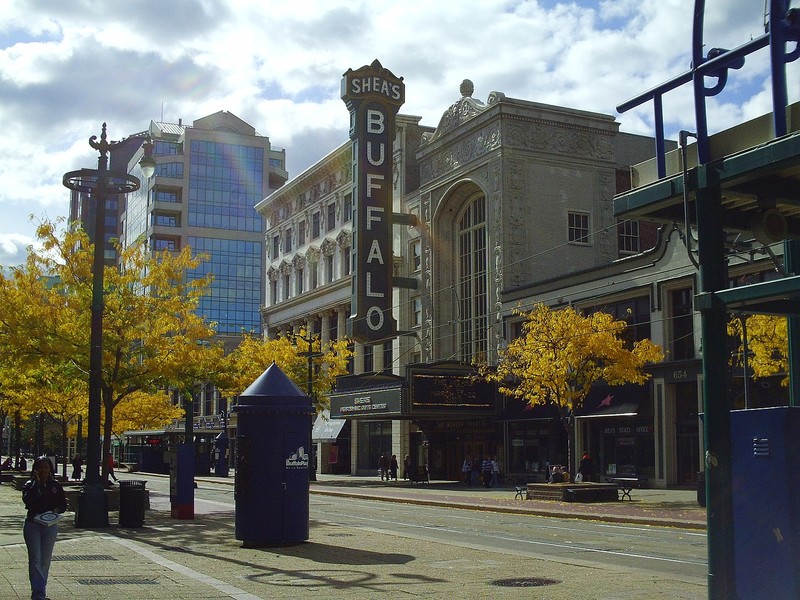
1926 photo
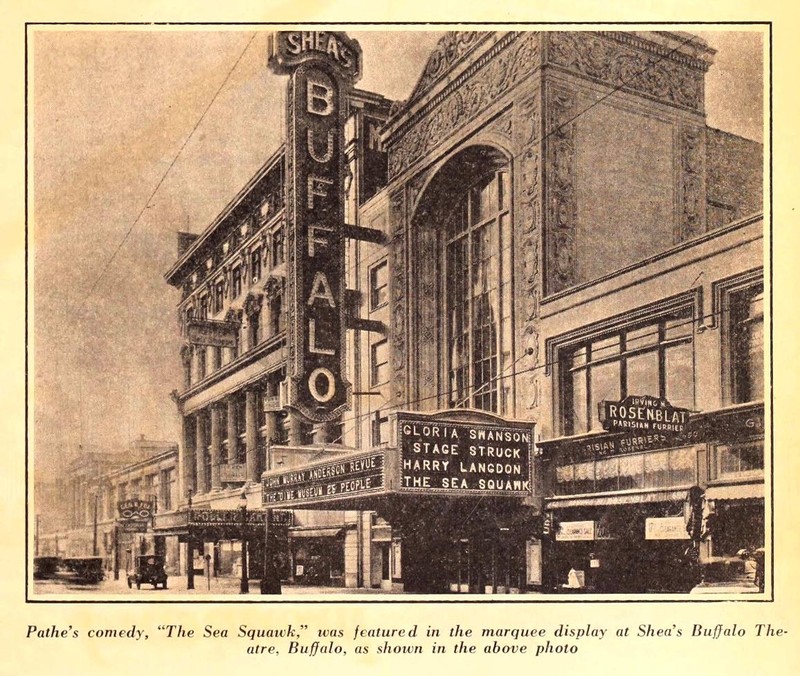
1920s (?) photo of of Shea's Buffalo Theatre
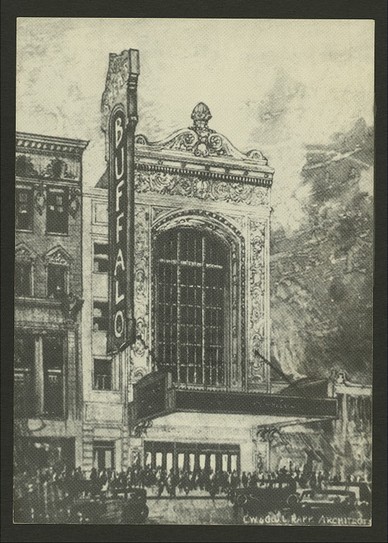
1933 photo with a new sign that notes the theatre as Shea's rather than Buffalo
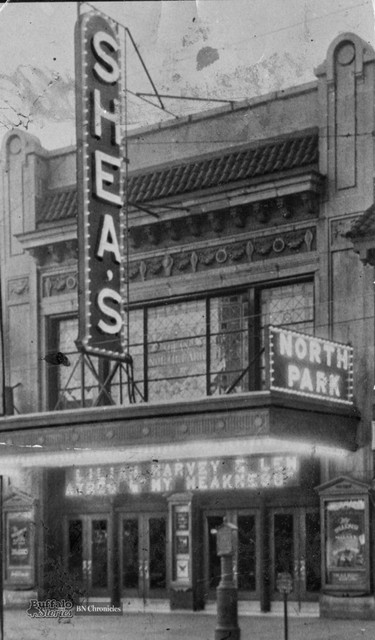
Modern photo of Shea's Buffalo Theatre lobby
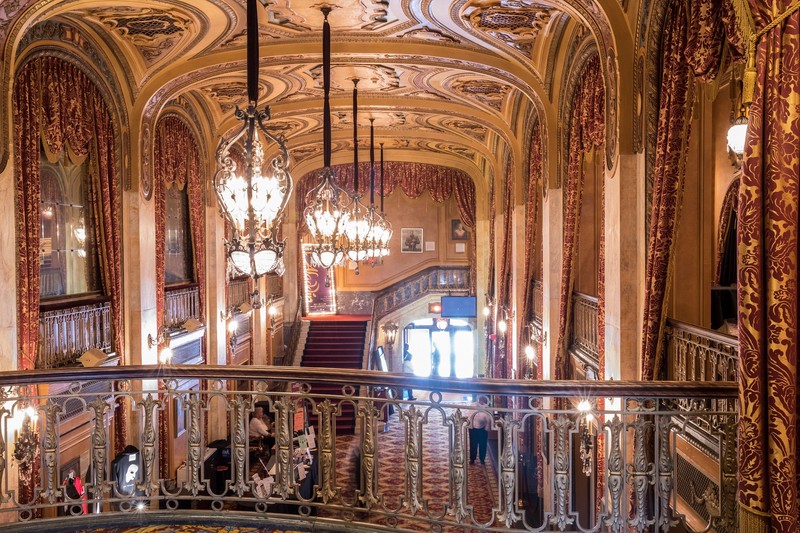
Modern photo of Shea's Buffalo Theatre

Backstory and Context
Text-to-speech Audio
Shea's Buffalo Theatre, designed by C. W. and George Rapp, opened in 1926 during an era when grand theater palaces opened in cities throughout the nation. Movie palaces served as the antithesis to the previous decade's troubled times marked by a world war, a global pandemic, and civic unrest. The large theatres were also intended to signal the growth of a city, foster civic pride, and celebrate a region's robust economy and growth. The Buffalo Theatre's elegance included marble and mirrored interiors, upscale furniture, enormous Czechoslovakian crystal chandeliers, and the celebrated Wurlitzer theatre organ.
During the 1920s, motion pictures grew into a lucrative industry. Movie palaces enhanced the movie experience with its brightly lit marquees, extravagant lobbies, and ornate theatre designs. Guests routinely enjoyed vaudeville routines and live music before the movie started -- an authentic entertainment experience. Shea's Buffalo Theatre opened in 1926, named for its builder, Michael Shea.
Michael Shea was a Buffalo native was born in 1859 to Irish-immigrant parents. His humble youth included working as a dock laborer and as a young man, he was a structural iron worker. He invested in the growing city he helped build with his two hands and rose to become the owner of theaters in Buffalo and Toronto. Shea spared no expense with the theatre that would bear his name and come to represent his city. He hired the famed theatre architects C. W. and George L. Rapp of Chicago, whose resume included New York's Paramount Theatre and Chicago's Oriental Theatre. The construction's final cost nearly hit $2 million (equal to $30 million in 2020).
An early brochure speaks to the grandness of the Buffalo Theatre: "There's room for all...We've made this theatre tremendous in size as well as overwhelmingly magnificent in decoration. It will hush you, aw you, stagger you." The Rapp brothers designed the theatre to resemble seventeenth- and eighteenth-century European opera houses and palaces. Rudolf Wurlitzer Co. provided the massive theatre organ consisting of pipes ranging from the size of a straw to thirty-two-feet long. The theatre initially accommodated nearly 4,000 patrons, but renovations during the Great Depression reduced that number by almost 1,000 seats. Despite the theatre's luxurious appearance, the Buffalo did not offer reserved seating, and the price of admission proved affordable to most economic classes (but almost exclusively for White residents as the city largely remained segregated).
The vast majority of movie palaces in the U.S. have been demolished or renovated beyond recognition. Still, the Buffalo Theatre has survived aging issues, struggling economies, the rise of multiplex cinemas, and foreclosures on the historic building. The Friends of Buffalo organization saved the theatre during the 1970s, including winning a decisive court battle against the Loews chain (who had operated the theatre since the 1950s). Loews had planned to gut the theatre and sell its contents. The Friends of Buffalo used government grants to fund a massive renovation and restoration of the theatre. As a result, the historic building reopened in the 1970s as an off-Broadway theatre venue. Today, it remains a vibrant part of the Buffalo entertainment scene, hosting everything from Broadway plays to big-name comedians to a wide range of live music shows. (Although, as of 2020, the theatre is closed due to the global COVID19 pandemic.)
Cite This Entry
Powers, Mathew and Clio Admin. "Shea's Buffalo Theatre (Shea's Performing Arts Center)." Clio: Your Guide to History. September 26, 2020. Accessed April 4, 2025. https://theclio.com/tour/1582/10
Sources
Brooke, Cornelia E. "Nomination Form: Shea's Buffalo Theatre." National Register of Historic Places. ny.gov. March 1975. Located digitally at https://cris.parks.ny.gov/ (Searchable Database).
Goldman, Mark. City on the Edge: Buffalo, New York, 1900 - Present. Amherst, NY: Prometheus Publishing, 2007.
LaChiusa, Chuck. "Shea's Buffalo Theatre/Shea's Performing Arts Center." Buffalo as an Architectural Museum. buffaloah.com. Accessed September 25, 2020. https://buffaloah.com/a/main/646/hp.html.
By Paranormal Skeptic - Own work, CC BY-SA 3.0, https://commons.wikimedia.org/w/index.php?curid=5021147
http://frank-dutton.blogspot.com/2016/01/sheas-buffalo-theatre.html
Billy Rose Theatre Division, The New York Public Library. "Theatres -- U.S. -- Buffalo, NY -- Shea's Buffalo Theatre" New York Public Library Digital Collections. Accessed September 25, 2020. http://digitalcollections.nypl.org/items/510d47df-5254-a3d9-e040-e00a18064a99
http://blog.buffalostories.com/what-it-looked-like-wednesday-sheas-north-park-in-1933/
https://www.sheas.org/
https://www.sheas.org/

